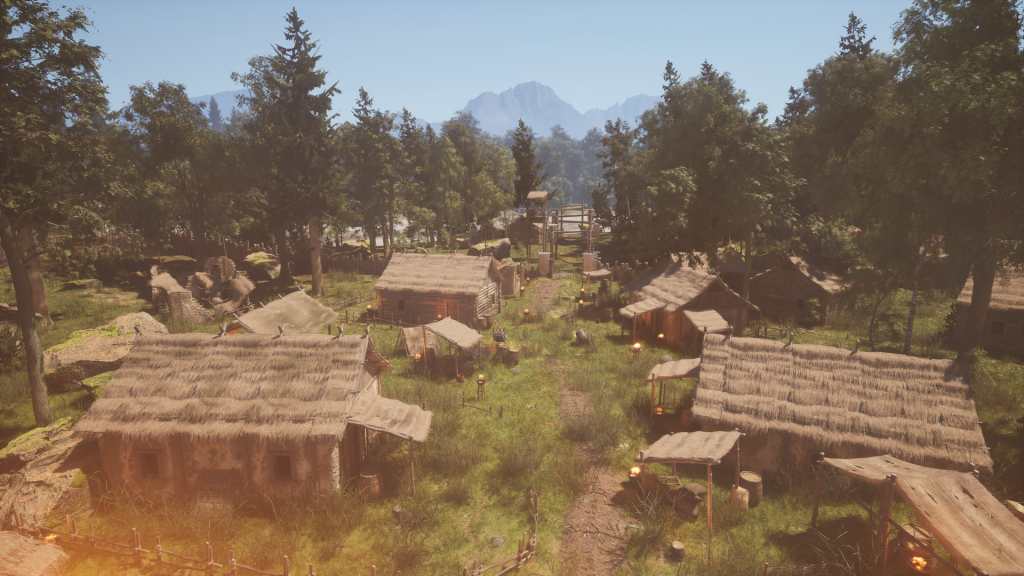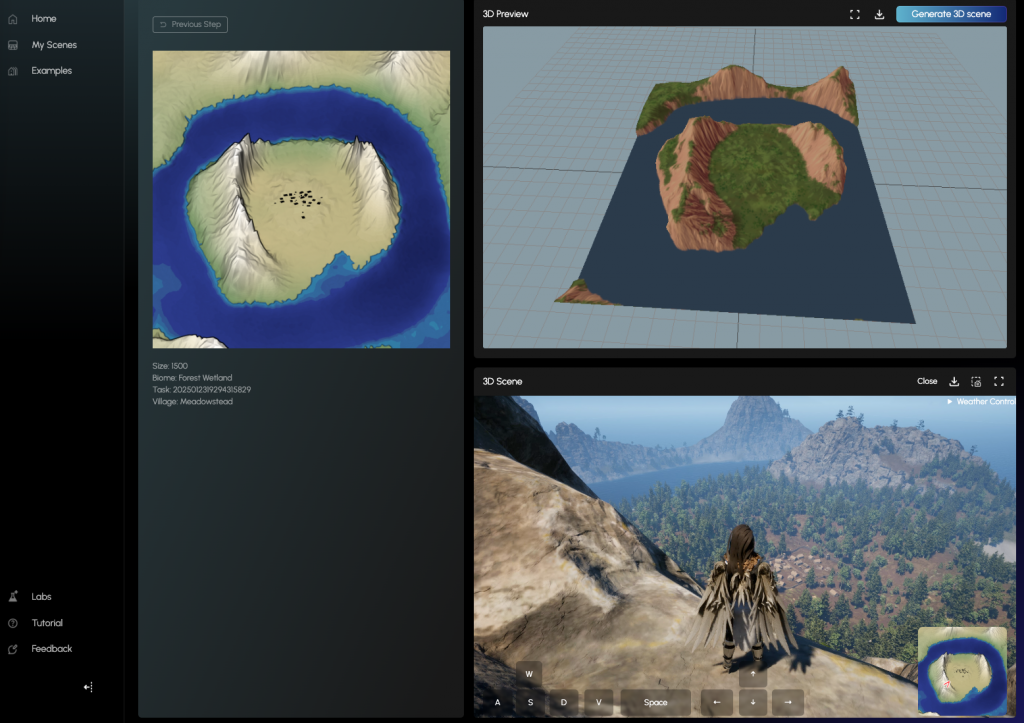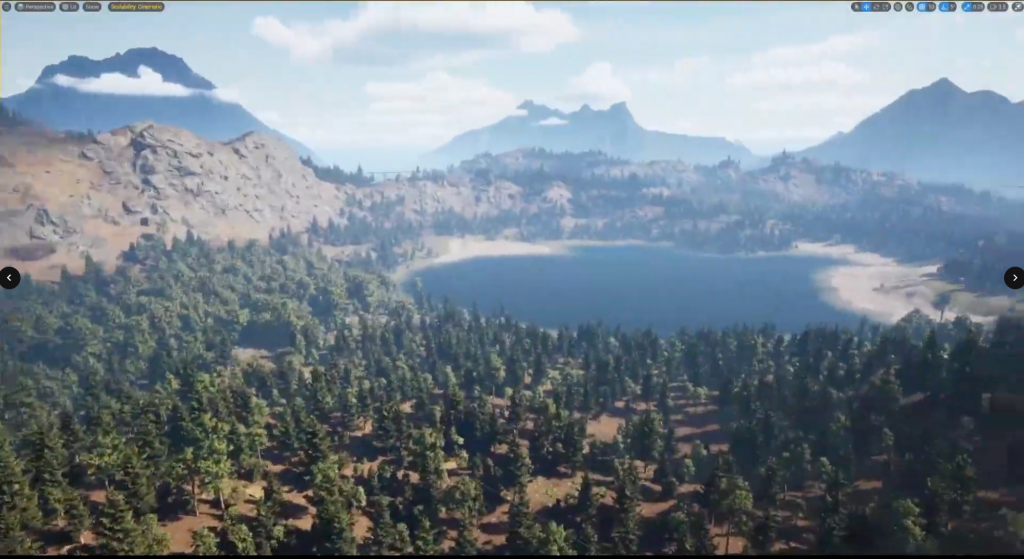Under a clear sky, Link gazes at the floating islands with his longbow in hand; under the low-hanging clouds, Wukong brandishes his golden staff and faces the ferocious monsters. Whether it’s the open-world exploration of The Legend of Zelda: Tears of the Kingdom, or the intense battles of Black Myth: Wukong, these video game masterpieces redefine the standards of adventure gaming with stunning visuals and unparalleled freedom. Classics such as Assassin’s Creed, Grand Theft Auto, God of War, and Elden Ring are just as immersive and mesmerizing.
Behind these successes, however, lie challenges that the 3D content industry cannot escape:development costs reaching hundreds of millions of dollars, extremely long production cycles, and massive labor demands.There’s no denying that the rising cost of AAA game development has become the industry’s biggest bottleneck.
Game Development: An Escalating Battle of Costs and Complexity
The cost of game development has been rising in recent years. In an interview, former PlayStation Worldwide Studios chairman Shawn Layden stated that developing a game cost around $1 million during the PS1 era, doubled to $2 million with the PS2, and increased to $4 million by the time of the PS3. When the PS4 launched, this figure had skyrocketed to $16 million, and with the arrival of the PS5, development costs have surged to a staggering $300–$400 million, exhibiting an explosive growth trend.
In addition, the complexity of game development has increased dramatically. Creating a AAA masterpiece requires not only a massive capital investment but also the coordination of hundreds of professionals—screenwriters, artists, designers, software engineers, and sound effects teams working in close collaboration. From 3D modeling to world design, from narrative to soundtrack composition, every aspect must be meticulously crafted to deliver an unparalleled immersive experience.
With production on the scale of a Hollywood blockbuster, AAA game development poses major challenges for the industry—especially for small and mid-sized studios.
Yet even with massive budgets, success is never guaranteed. Take Sony’s Concord—despite a budget of hundreds of millions, it was pulled from stores just 12 days after launch. As development costs and complexity soar, the risks are higher than ever.
Reducing costs and complexity to minimize development risks has become a major challenge for the industry. The gaming sector is in need of a transformation, and Silicon Valley startup Cybever is leading the charge.
Cybever’s AI Revolution: Transforming Game Development with Speed and Efficiency
“Traditional 3D content creation is like hand-wrapping dumplings,” said Jie Yang, cofounder and CTO of Cybever. “If you’re serving a small number of users, traditional methods work fine, but if you want to scale, you need better tools and processes. Cybever’s mission is to leverage AI to revolutionize the prototyping and pre-production phases of game development, which are the most time-consuming and labor-intensive parts of the process.”
Jie Yang and Cybever cofounder and CEO Cecilia Shen previously served as a research lead and software engineer at Google X, the Moonshot Factory, where they specialized in inventing potentially world-changing technologies. Their experience at Google X inspired them to launch Cybever, a platform that combines generative AI with 3D technology to provide practical and scalable tools for the game industry.
Traditionally, a 3D game requires various natural landscapes and urban environments, along with corresponding 3D assets that match the storyline. For instance, if the setting is a small American town in the 1990s, it would need nostalgic elements such as brick buildings, neon signs, vintage cars, and public phone booths. If the story takes place in medieval Europe, the environment might feature vast fields, wooden mills, thatched-roof cottages, stone bridges, horse-drawn carriages, and towering castles.
Meanwhile, game developers have two choices: create their own 3D assets or purchase them. The former is time-consuming, requiring powerful GPUs, CPUs, and expensive specialized software. The latter, while feasible, sacrifices originality and uniqueness, often resulting in inconsistencies in artistic style and quality that fail to meet the game’s requirements.
With the rise of generative AI, many companies have attempted to use AI to generate 3D environments and assets directly. However, with current technology, the goal of generating entire game scenes with AI remains aspirational but underwhelming in practice. Despite the efficiency and low cost advantages of GenAI-generated 3D assets, they still significantly lack in refinement, accuracy, standardization, and controllability. Additionally, generated content may involve copyright risks. Overall, the current stage of GenAI 3D technology falls short of meeting the high-quality and highly customized demands of professional game or film productions.

Why Cybever Took an Alternative Approach to Direct AI Generation
Because of this, Cybever has adopted a more market-driven and practical strategy to directly address the pain points of game developers. Instead of relying on AI to generate 3D assets from scratch, Cybever collaborates with existing asset libraries and 3D studios to streamline the production process. AI is used to retrieve the most suitable objects, accurately place them within the 3D environment, and fine-tune them—ultimately enabling high-quality 3D scene creation at an unprecedented speed.
Unlike competitors that rely on AI to generate 3D assets from scratch, Cybever leverages AI for asset retrieval, placement, and world-building—allowing for faster and higher-quality results. Additionally, Cybever supports cloud collaboration, significantly reducing development costs and complexity. It can directly generate project files for game engines like Unreal Engine 5 and Unity, enabling developers to seamlessly integrate Cybever’s output into their game development workflow without manual conversion.
This approach is not only more aligned with industry needs but also directly addresses one of the biggest challenges in game development: ensuring consistency and quality while drastically reducing production time.
“Let’s say a game requires a desolate, post-apocalyptic setting. In a traditional 3D design process, developers might spend weeks manually modeling rivers, hills, buildings, and other assets,” Yang said, “or purchasing pre-made buildings and props from 3D asset libraries.” Even after acquiring these assets, integrating them into the 3D environment and making final adjustments is still a time-consuming process.
With Cybever’s solution, developers simply enter a few prompts—such as “desolate Gobi Desert‘’ or “mountains surrounding a lake”—and the system automatically generates a 3D scene while simultaneously retrieving the most relevant assets from partner libraries and placing them in the environment. In just a few minutes, a detailed 3D world takes shape, ready for fine-tuning, including terrain and weather adjustments.

This AI tool has cut scene design time from one to two weeks down to a single day, saving game developers more than 70% of their time. Currently, Cybever has nearly 4,000 users on the waitlist. They have also invited dozens of game studios to participate in internal testing, receiving extensive positive feedback. “We’re grinding away to build features that’ll be a game-changer for creators—making game development faster, smarter, and way more affordable,” Yang said with a spark of entrepreneurial enthusiasm.
Cybever’s AI solution not only understands user intent but also incorporates historical, cultural, and geographic context to create scene layouts that align with specific styles and eras. For example, when placing assets, the AI considers historical accuracy and spatial logic, such as the proportion of farmland in a medieval village or the appropriate width of a street in a modern city.

Cybever’s AI ‘Iron Man Suit’ Is Changing 3D Game Development
However, Cybever did not take this path from the outset. “At the beginning of our journey, we explored many different directions, including generative AI chatbots, intelligent NPCs in games, 3D avatars, and more,” admits Jie Yang.
“It took us a while to sit down, rethink, and return to our original goal: creating high-quality 3D content,” says Yang. It was during this period that the Cybever team decided to pivot away from other AI applications to focus on 3D environment generation and asset placement technology. “If you try to do everything, you end up doing nothing well. We had to let go of some seemingly promising opportunities and focus on what truly matters.”
For game studios, Cybever’s solutions can significantly reduce development time and labor costs, while for 3D asset companies, partnering with Cybever opens a vibrant new chapter in their business journey. Through AI, assets can be automatically searched and placed, making it easier for creators to find the materials they need while providing 3D artists with a broader audience of potential buyers. As a result, the once-separate realms of “creation” and “transaction” are now intricately linked, enhancing efficiency and fostering collaboration across the industry.
This is why many well-known 3D asset platforms, such as Daz 3D, along with numerous AAA-level 3D studios, are partnering with Cybever to drive innovation and development in 3D content.
Not only has Cybever’s technology been embraced by game developers, but it’s also making waves in film and entertainment. Recently, Cybever teamed up with The Day After Tomorrow director Roland Emmerich, whose upcoming sci-fi TV series Space Nation relies on AI to generate 3D environments and previsualization (previs) . This allowed the production team to build scenes faster and make quick visual adjustments.
“AI is revolutionizing content creation,” says Jie Yang. “With Cybever’s AI, everyone—whether professionals or amateur 3D enthusiasts—will be able to create high-quality 3D worlds with ease. Think of AI as an Iron Man’s armor for 3D creators—once you put it on, you’re no longer bound by traditional limitations. It enhances your abilities, amplifies your creativity, and enables you to build worlds that were once impossible.”
This article has been contributed to Asia Tech Daily.

